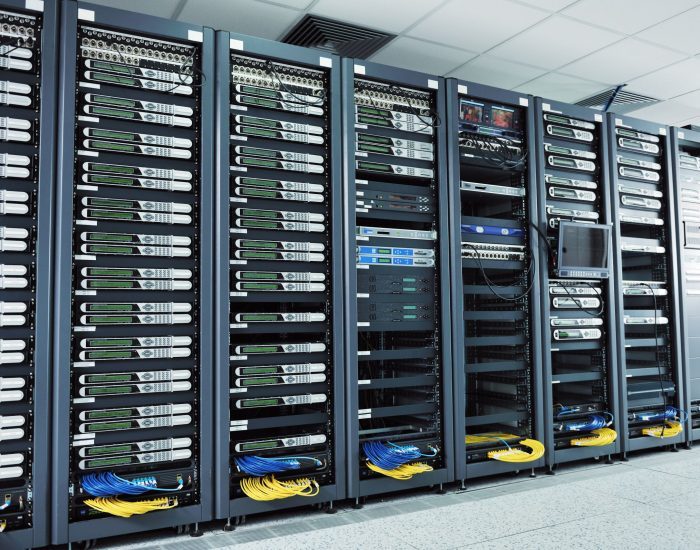The Top Seven Data Center Management Issues
1. Data security
Data center security refers to the physical practices and virtual technologies used to protect a data center from external threats and attacks. A data center is a facility that stores IT infrastructure, composed of networked computers and storage used to organize, process, and store large amounts of data.
Security is an ongoing challenge for any data center. A data breach can cost millions of dollars in lost intellectual property, exposure of confidential data and stolen personally identifiable information. Risk management and securing both stored data and data as it is transmitted across the network are primary concerns for every data center administrator.
Data centers are complex and to protect them, security components must be considered separately but at the same time follow one holistic security policy. Security can be divided into:
Physical security encompasses a wide range of processes and strategies used to prevent outside interference.
Software or virtual security prevents cybercriminals from entering the network by bypassing the Firewall, cracking passwords, or through other loopholes.
2. Real-time Monitoring and Reporting
Real-time (data) monitoring is the delivery of continuously updated information streaming at zero or low latency. IT monitoring involves collecting data periodically throughout an organization’s IT environment from on-premises hardware and virtualized environments to networking and security levels
Data centers have a lot going on inside them, so unexpected failures are inevitable. There are applications, connecting cables, network connectivity, cooling systems, power distribution, storage units, and much more running all at once. Constant monitoring and reporting different metrics is a must for data center operators and managers.
A DCIM system provides deeper insights into the data center operations and performance metrics. It helps you track, analyze, and generate reports real-time, so you’re capable of taking well-informed decisions and immediate actions accordingly.
The best example of this software is PRTG. PRTG Network Monitor is an agentless network monitoring software from Paessler AG. It can monitor and classify system conditions like bandwidth usage or uptime and collect statistics from miscellaneous hosts as switches, routers, servers and other devices and applications.
3. Uptime and Performance Maintenance
Measuring the performance and ensuring uptime of data centers is the major concern for data center managers and operators. This also includes maintaining power and cooling accuracy and ensuring the energy efficiency of the overall structure. Manually calculating the metrics is of no or a very little help in most cases.
A powerful tool like a DCIM system, helps you, as a data center manager, to measure the essential metrics like Power Usage Effectiveness (PUE) in real-time, making it easy for you to optimize and manage the uptime and other performances.
4. Cabling Management Issues
Data centers use many cables, and they can become a nightmare to deal with if not managed well. Facilities should find a way to store and manage all cables, from power cables to fiber-optic wiring to make sure they all go where they’re supposed to. Unstructured and messy cabling is chaotic, even on small data rooms. It can make any data center look unprofessional in a heartbeat, not to mention dangerous.
Poor cable management can restrict airflow, especially in small spaces. Restricted airflow puts unnecessary strain on the facility’s cooling system and computing equipment. The challenge here is that IT personnel need to organize and structure all cabling to make future management easier. Scalable infrastructure needs organized cable management because inefficient wiring can cause deployment restrictions.
5. Balancing cost controls with efficiency
Budgeting and cost containment are ongoing concerns for any department, but the data center has its own unique cost-control concerns. CIOs want to ensure that their data centers are efficient, innovative and nimble, but they also have to be careful about controlling costs. For example, greening the data center is an ongoing goal, and promoting energy efficiency reduces operating costs at the same time that it promotes environmental responsibility, so IT managers monitor power usage effectiveness. Other strategies such as virtualization are increasing operating efficiency while containing costs.
6. Power management and Lack of cooling efficiencies
In addition to power conservation, power management is creating a greater challenge. Server consolidation and virtualization reduce the amount of hardware in the data center, but they don’t necessarily reduce power consumption. Blade servers consume four to five times the energy of previous types of data storage, even though they are usually more efficient overall. As equipment needs change, there is more concern about power and cooling demands.
Without proper monitoring and management, it’s challenging to be efficient in your data center management and operations. Charts and reports provide the information needed to determine cooling infrastructure utilization and potential gains to be realized by airflow management improvements, such as environment improvements, reduced operating costs, and increased server utilization.
7. Capacity planning
Maintaining optimal efficiency means keeping the data center running at peak capacity, but IT managers usually leave room for error—a capacity safety gap—in order to make sure that operations aren’t interrupted. Over-provisioning is inefficient and wastes storage space, computer processing and power. Data center managers are increasingly concerned about running out of capacity, which is why more data centers are using DCIM systems to identify unused computing, storage and cooling capacity. DCIM helps manage the data center to run at full capacity while minimizing risk.






